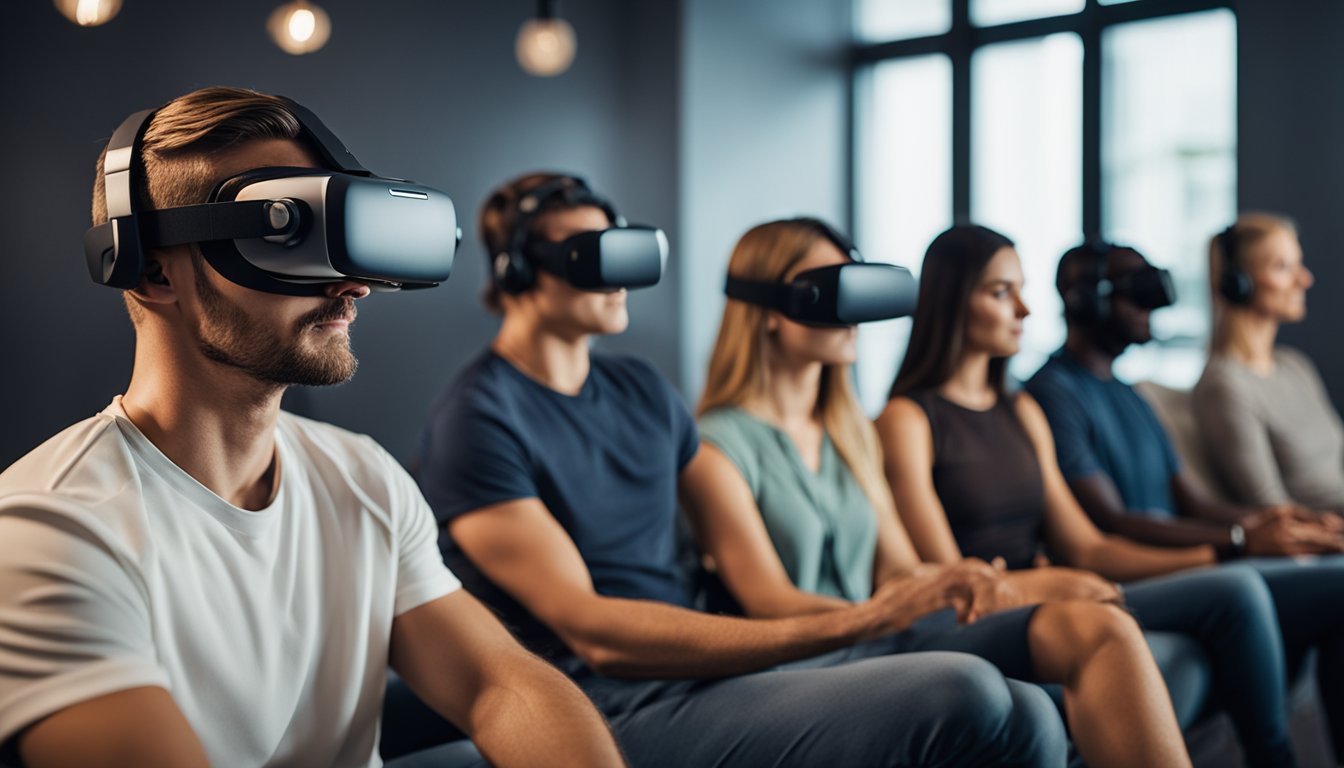Late updated: 07 Aug 2024 09:08
Written by: Ella Thompson
Latest Innovations In Addiction Recovery Treatments: Cutting-Edge Approaches for Effective Healing
Innovations in addiction recovery treatments are offering fresh hope to millions worldwide. Amid an alarming rise in drug overdose deaths, new medical treatments and technological advancements are transforming how we approach substance use disorders. From IV NAD+ treatments to the latest in repetitive transcranial magnetic stimulation (rTMS), innovative therapies are shifting the landscape of recovery.

The National Institutes of Health's HEALing Communities study, with its focus on overdose education and naloxone distribution, is an example of how large-scale initiatives aim to address this crisis. Meanwhile, personalised medicine and digital therapeutics are providing more tailored and accessible options for those seeking help.
Psychologists are also stepping up, developing new strategies to mitigate the harmful consequences of addiction. As we explore these advancements, it is clear that the future of addiction treatment is not just promising; it is evolving rapidly, equipping us with better tools to support recovery.
Key Takeaways
- Cutting-edge therapies are revolutionising addiction recovery.
- Personalised treatments and digital tools offer new hope.
- Research and education initiatives aim to curb overdose fatalities.
Advancements in Medical Treatments for Addiction
In recent years, significant strides have been made in the field of addiction recovery treatments. These include developments in both pharmacological interventions and innovative therapeutic approaches, aimed at improving health outcomes and reducing the stigma around addiction.
Pharmacological Interventions
Pharmacological interventions remain a cornerstone in addressing addiction, particularly with opioid use disorder (OUD). Buprenorphine and methadone are two key medications prominently used.
Methadone, a long-acting opioid agonist, stabilises patients and reduces cravings, thus preventing relapse. Meanwhile, buprenorphine, a partial opioid agonist, offers a safer alternative with a lower risk of misuse.
The introduction of naloxone, an opioid antagonist, has significantly improved overdose survival rates. Notably, nasal sprays like Narcan have made naloxone easily accessible for emergency use.
Furthermore, injectable medications such as naltrexone provide another option by blocking opioid receptors and preventing the euphoric effects of opioids. The development of these medications represents vital tools in managing and treating OUD effectively.
Innovative Therapeutic Approaches
Beyond traditional pharmacology, innovative therapeutic approaches are reshaping addiction treatment. Cognitive-behavioural therapy (CBT) helps individuals develop coping strategies, addressing the root causes of addiction.
Contingency management is another effective approach, where positive behaviours are reinforced through tangible rewards. This method has shown success in various substance use disorders, including cannabis use disorder and stimulant use disorders.
Emerging therapies like IV NAD+ therapy are gaining attention, though high doses and intravenous administration present challenges. Efforts in personalised medicine, such as biotype-based treatments, aim to tailor interventions to individual biological profiles, potentially transforming the efficacy of addiction therapies.
Overall, these advancements signify a multi-faceted approach to addiction treatment, enhancing recovery outcomes and offering hope to many battling substance use disorders.
Technology-Enhanced Addiction Recovery

Technology is revolutionising addiction recovery by offering accessible, effective solutions that cater to the specific needs of individuals. Evidence-based digital tools and remote healthcare options are enhancing the reach and quality of addiction treatment.
E-Health Solutions and Apps
E-health solutions encompass a variety of digital tools, such as smartphone applications and internet-delivered treatments. These apps, such as the Addiction-Comprehensive Health Enhancement Support System (A-CHESS), offer continuous support for individuals in recovery.
A-CHESS provides educational content, access to support groups, and communication with healthcare providers.
AI-driven applications are emerging, offering personalised recovery plans based on user data. These plans adapt dynamically, ensuring relevance and effectiveness. Smoking cessation apps also show potential in reducing addiction-related behaviours.
Youth substance use prevention is another key area. Apps targeted at younger demographics utilise engaging, interactive content to educate and support.
Telehealth and Remote Healthcare
Telehealth expands access to addiction treatment, particularly for those in remote areas. By using video conferencing and online platforms, care providers can reach patients who face barriers such as stigma or geographical distance.
The Substance Abuse and Mental Health Services Administration supports the integration of telehealth. This support has accelerated the adoption of remote healthcare for addiction treatment.
Smartphones and internet connections enable continuous monitoring and support. This technology enhances adherence to treatment plans and allows for immediate intervention when signs of relapse appear.
Both synchronous (real-time) and asynchronous (store-and-forward) telehealth methods are employed to maximise flexibility and effectiveness. This blend provides tailored care that meets individual needs while maintaining high standards.
Frequently Asked Questions

Advancements in addiction recovery are incorporating innovative methodologies, digital tools, and emerging technologies to enhance treatment efficacy and provide comprehensive support for individuals.
What methodologies are proving most successful in current addiction therapy?
One of the most promising methodologies in addiction therapy is the use of medication-assisted treatment (MAT). It combines medications like methadone, buprenorphine, or naltrexone with counselling and behavioural therapies. Cognitive-behavioural therapy (CBT) and contingency management are also frequently utilised to address the underlying psychological aspects of addiction.
Which digital tools are emerging to support substance abuse rehabilitation?
Digital tools such as telehealth platforms allow remote therapy sessions, which increase accessibility for individuals in recovery. Wearable devices and mobile apps are also being deployed to monitor physiological signs and provide real-time support. These tools facilitate continuous engagement and personalised interventions.
Could you delineate the four principal components of recovery as identified by SAMHSA?
SAMHSA identifies the four principal components of recovery as health, home, purpose, and community. Health involves managing disease and living in a physically and emotionally healthy way. Home provides a stable and safe place to live. Purpose includes meaningful daily activities, and community encompasses supportive relationships and social networks.
In what ways are virtual reality platforms being utilised in the process of addiction treatment?
Virtual reality (VR) platforms are being used to simulate environments and scenarios that trigger cravings or stress. This controlled exposure helps individuals develop coping strategies in a safe setting. VR is also applied for relaxation techniques and mindfulness training, enhancing the overall therapeutic experience.
How are mobile applications being designed to aid in the adherence to addiction recovery plans?
Mobile applications are designed with features such as daily check-ins, mood tracking, and reminders for medication and appointments. They provide a platform for users to connect with support groups or therapists on demand. Interactive modules offer educational resources and strategies to handle triggers and prevent relapse.
What is the role of artificial intelligence in predicting and preventing relapse in addiction recovery?
Artificial intelligence (AI) plays a pivotal role by analysing data patterns to predict potential relapse risks. AI algorithms can identify early warning signs based on user behaviour, physiological data, and historical trends. This allows for timely interventions and personalised support, significantly reducing the likelihood of relapse.
